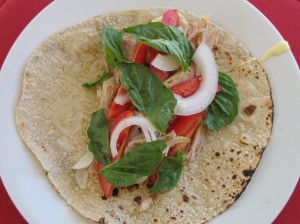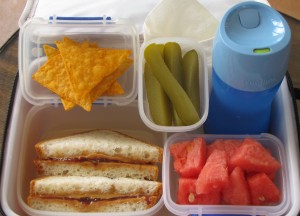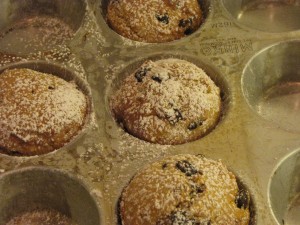It’s very overwhelming and somewhat alienating to have allergies and/or intolerances. It’s necessary to have help and it comes in all shapes and sizes. Obtaining knowledge is one of the key factors to living well with this condition.
General Celiac and Gluten-Free Information
Celiac Disease Foundation www.celiac.org
Celiac.Com www.celiac.com
Gluten Intolerance Symptoms http://gluten-intolerance-symptoms.com
Whole Foods http://www.wholefoodsmarket.com/nutrition/celiac-disease.php – some of the best and most useful information out there
Gluten in Prescription Drugs
My friend Mark is a retired pharmacist and has given me two great resources to check for gluten in medications:
www.glutenfreedrugs.com and gfmedications.com
Dairy/Lactose Intolerance
Here’s some good information about lactose intolerance, which is quite different from a milk allergy, which produces an anaphylactic response.
https://health.google.com/health/ref/Lactose+intolerance
Soy Allergies
Here’s what the Mayo Clinic has to say about soy intolerance – allergies and symptoms.
www.mayoclinic.com/health/soy-allergy/DS00970
Nightshade Allergies
Known as the deadly nightshades, historically, this family of plants has been linked to shamanism and witchcraft. I know. It makes you think of a pagan ceremony with social outcasts stirring a giant cauldron under a full moon. But the truth is, there is a family of plants and vegetables that can be quite poisonous to the right person. Nightshades include white potatoes (but not yams or sweet potatoes), tomatoes, all peppers (but not black pepper), eggplants and tomatillos. This species also includes tobacco, poisonous belladonna and the toxic plants herbane, mandrake and jimson weeds. A particular group of substances in these food, called alkaloids, can impact nerve-muscle function and digestive function in animals and humans, and may also compromise joint function. There’s not a lot of information out there about them, but if you have a reaction to one nightshade, you have a 75% chance of being allergic to all of them. The most common symptoms are migraine, nausea, diarrhea, dizziness, inflammation, stiffness in the joints and weakness/fatigue. Here’s an article I found that does a good job of explaining this condition.
Gluten-Autism Connection
Providing information and resources relating to the Gluten-Autism connection is a topic near and dear to my heart for many reasons. When my infant son was diagnosed with gluten-intolerance, we re-tested him by giving him food containing gluten. Within a half hour, he had horrible diarrhea and a distended abdomen. But what put the fear of God in me was that gluten in his diet produced the characteristics of autism.
My son would stop making eye contact with us. As he became a toddler and starting speaking, he virtually lost his powers of speech and sociability when he accidentally ingested gluten. He would literally back into a corner and not want us to touch him, but he didn’t want to be alone. I remember his face pulled into tight distress and nothing we could do would ease him. It took a few days for the gluten to work its way out his system and our son would finally return to us.
So the thought of “there but for the grace of God go I” is a sentiment foremost in my mind. Every morning when I wake him up for school, I am acutely aware of the path we might have taken. I am grateful that this little boy gave me the answer to my decade and a half struggle, which in turn gave us, his parents, the knowledge of what was happening to him. He was spared and for that I am eternally grateful. It’s one of the main reasons I created this blog and resource guide. It’s what drives me and keeps me researching and asking.
There are many resources out that that insist a GFCF (gluten-free, casein-free) diet is a must for children diagnosed with autism. The diet may not work for everyone, but it has been suggested that it may works for 8 in 10 cases. For those of you with children on the spectrum, I invite you to arm yourself with information so that you can advocate for your child.
Generation Rescue is an organization that promotes recovery through diet, treatment and advocacy. They offer assistance for families who can’t afford treatment as well as other support services. If your child is on the spectrum, please visit their site, as well as Gluten-Solutions.com to discover how you may affect your child’s treatment through, among many things, diet.
Food Labels
Want to know how to really read a food label? Labelwatch.com is a great site to help consumers determine what’s in their food and what the ingredients mean. Ingredients listed in green are beneficial; those in yellow are considered to be “okay and appear to be safe”. But watch out for the ingredients in red, which labelwatch.com considers to be “problematic,” and include ingredients like “enriched wheat, autolyzed yeast extract, MSG and Sodium Nitrite,” to name a few. This site provides opportunities to understand what these ingredients actually are, how they might affect you and government safety guidelines. Information allows you, the consumer, to make up your own mind. Be sure to check out their thoughts on food additives.
NEWS…NEWS…NEWS and upcoming EVENTS
Adult Onset Celiac
Here’s an interesting article from the Wall Street Journal, from Sept. 27, 2010, that discusses the relationship of gut bacteria to adult on-set celiac.
Local Lecture in San Diego
Tuesday, November 4, 7:00 – 8:30 pm. at UCSD
“Celiac Disease: Facts, Fiction & Controversy”
Speakers were Martin F. Kagnoff, M.D., Kimberly P. Newton, M.D. and Shawna L. McNally, M.P.H, R.D., all from the Warren Medical Research Center for Celiac Disease. There were also two previous Community Lectures on celiac disease given by the Warren Center on September 2007 and October 2008. They cover diagnosis, gluten intolerance, diet and more and are both available to be viewed on Youtube.com. To read more about the lectures and to get the direct Youtube links, see http://celiacenter.ucsd.edu/.
Look for some of my Recent Favorite Finds above in Products.
Brown rice wraps:
These Trader Joe’s brown rice wraps need to be warmed on an open flame first, or in a hot pan so that they are pliable, but these wraps are wonderful. They need to be eaten warm, and should probably be avoided for a packed lunch. But when my starving kids come home from school, this is what they like best, wrapped around hummus, turkey or chicken, thinly sliced red onion and basil leaves. I like mine with homemade mayonnaise and fresh tomatoes.
Udi’s Bread:
It may sound dramatic, but I really don’t know how I muddled through breakfast and lunch before Udi’s. They are a bakery in Colorado who have discovered how to add that bounce-back quality when you bite into a slice of their bread. And the bonus? It tastes like “real” bread and it looks like “real” bread (straight from my kid’s mouths).
Pamela’s Baking & Pancake Mix:
Not only are her store bought cookies a treat, but Pamela’s mixes are amazing. This one is a staple. But be warned. There is a very small amount of milk in this mix – not enough to bother my kids in the least. If you can tolerate a tiny bit, this is a life-saver. My daughter makes her rendition of chocolate chip mini muffins that she freezes for easy access through the week. And the pancakes are amazing.










